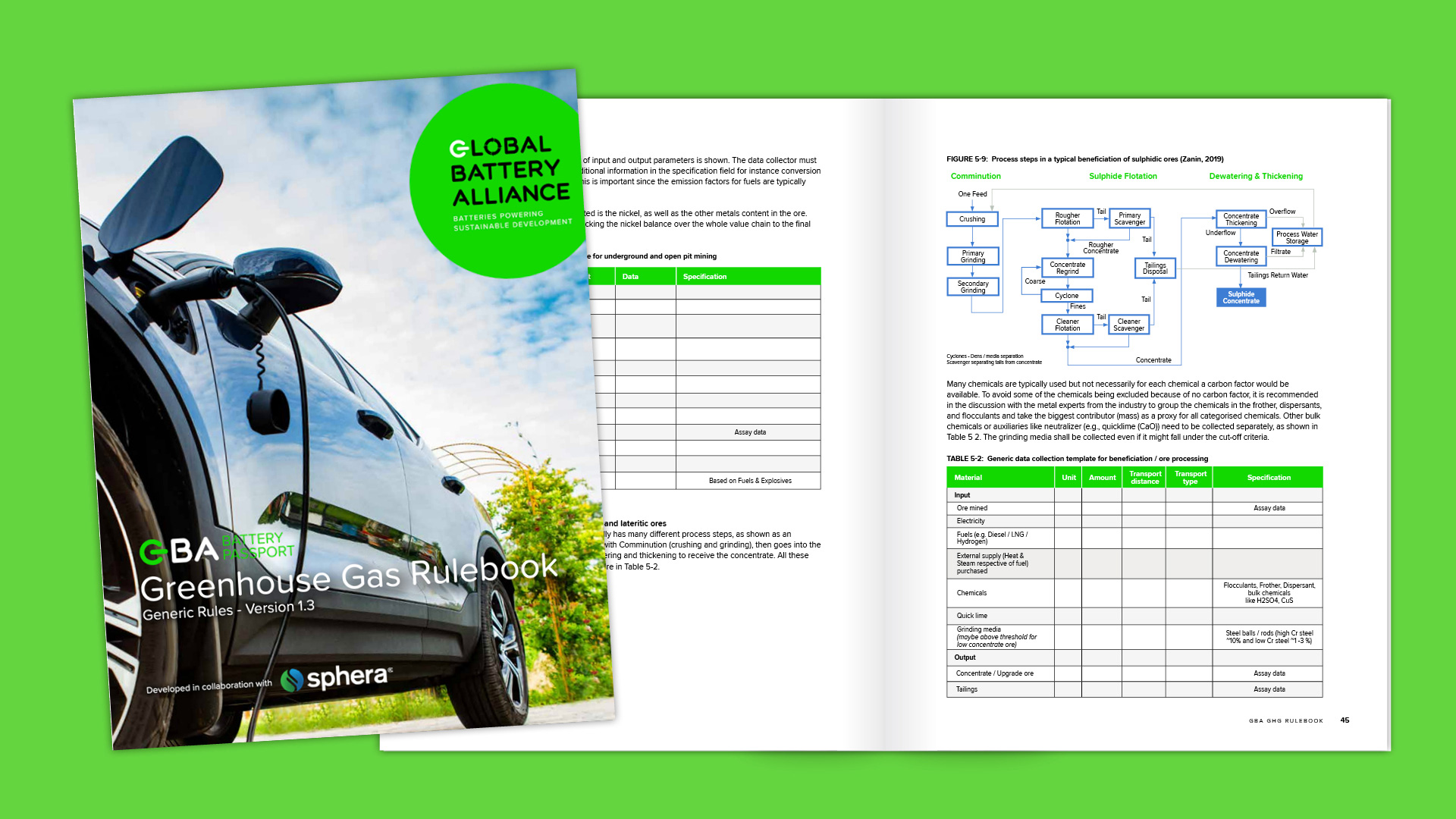The Global Battery Alliance (GBA) recently published the Greenhouse Gas Rulebook for calculating and monitoring the carbon footprint of lithium-ion batteries for electric vehicles.
The new EU Batteries Regulation will require the carbon footprint details to be provided on batteries for light means of transport, industrial batteries with a capacity of over 2 kWh and batteries for electric vehicles (EV). Until now, there has been no specific standard or guidelines for calculating the carbon footprint of batteries. The objective of the newly published Rulebook is to unify the collection of carbon footprint data and obtain comparable data. At this stage, the Rulebook only applies to lithium-ion EV batteries.
Batteries are at the centre of the green transition, and they play a significant role in renewable energy and the electrification of transport. However, the battery value chain is still relatively non-transparent, and information on life cycle CO2 emissions and other environmental impacts is not sufficiently available.
The GHG Rulebook serves as a basis for collecting data in the Battery Passport
The GHG Rulebook offers a method that allows data to be collected and generated across the battery value chain in a standardised way. This provides transparency and comparability for the carbon footprint of batteries throughout their life cycle. The GHG Rulebook focuses on the carbon footprint of the manufacturing stage of batteries. It does not yet include guidelines for calculating the carbon footprint of batteries during their use and end-of-life stage, but such guidelines may be incorporated into future versions of the Rulebook.
The GHG Rulebook may also serve as a basis for collecting the carbon footprint data to be included in the Battery Passport. The new Batteries Regulation will require EV batteries and certain industrial batteries to have a Battery Passport. The Battery Passport is the digital product passport for batteries. It functions as a digital twin of the physical battery and as a data set about the battery properties and information related to batteries, such as their carbon footprint. (Read about How Valmet Automotive is preparing for a digital battery passport.)
The GHG Rulebook was developed based on the input of 41 members of the Global Battery Alliance, which collectively cover the full EV battery value chain and include Tesla, Renault, Eurasian Resources Group, BASF, Saft, Umicore, Natural Resources Canada, Transport & Environment, and others. Many existing standards and guideline documents related to calculating the carbon footprint and life cycle assessment were used in developing the Rulebook. Examples of these standards and documents include ISO 14040, ISO 14067, the Greenhouse Gas Protocol and ISO 14025.
Read more on the Global Battery Alliance website: Greenhouse Gas Rulebook (PDF).
